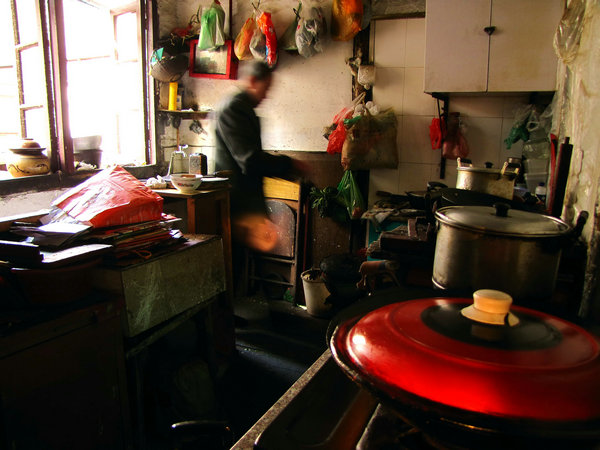Cocktail of past and present
Updated: 2015-06-06 08:06
By Satarupa Bhattacharjya In Shanghai(China Daily)
|
||||||||
 |
|
A scene from a dilapidating building. [Photo by Jing Wei / For China Daily] |
The keepers say it is the real thing, complete with displays of original furniture and household items such as paperweights and glass lanterns used decades ago, and laminated copies of the defunct US movie magazine Photoplay resting on a wooden dressing table.
Walls made of rocks characterized such houses that had long alleyways between them and often open courtyards.
"Xintiandi's commercial success by means of shikumen demonstrated its success in the imagination of old Shanghai," the 62-year-old Yu wrote in a 2011 paper on socio-spatial perspectives on urban changes in Shanghai. But the loss of shikumen houses led people into more isolated living in present-day Shanghai, he added.
Shikumen houses, the majority of which were built in the 1920s and '30s, and where about 70 percent of the city dwellers lived, were torn down in the 90s, with urban planners arguing that they were dilapidated.
A Hong Kong-based company developed Xintiandi as an entertainment hub in the past 20 years.
In a separate paper on Shanghai's urban development from Mao's era to that of economic reformer Deng Xiaoping's time, Yu and his academic colleague Yan Fei, described Xintiandi as the "new landmark of 'capitalist' Shanghai".
- Students prepare to take national college entrance exams
- TV giants suspend shows for ship wreck mourning
- China, Japan reopen finance talks after delay over sour relations
- Crews raise capsized ship to assist search
- China rescuers right ship to speed up search for missing
- More countries send condolences over China's cruise ship accident

 Man sues actress for staring at him
Man sues actress for staring at him
 Students prepare to take national college entrance exams
Students prepare to take national college entrance exams
 Across America (May 29- June 4)
Across America (May 29- June 4)
 Operation underway to turn the ship over
Operation underway to turn the ship over
 Prayers held for ship passengers
Prayers held for ship passengers Warriors beat Cavs in Game One OT thriller
Warriors beat Cavs in Game One OT thriller
 Cannavaro's Evergrande life in photos
Cannavaro's Evergrande life in photos
 Ten photos you don't wanna miss - June 5
Ten photos you don't wanna miss - June 5
Most Viewed
Editor's Picks

|

|

|

|

|

|
Today's Top News
Death toll jumps to 396
as hopes of finding any
survivor in cruise fade
China, Japan reopen finance talks after delay over sour relations
Hacking claim isn't responsible, Beijing says
Startups return to China to battle pollution
Rescuers right ship to
speed up recovery
Overseas real estate investment hits record $7.5b in Q1
Editorial: Aquino shows a lack of sense or sensibility
60% of Chinese youth OK with premarital sex: survey
US Weekly

|

|







